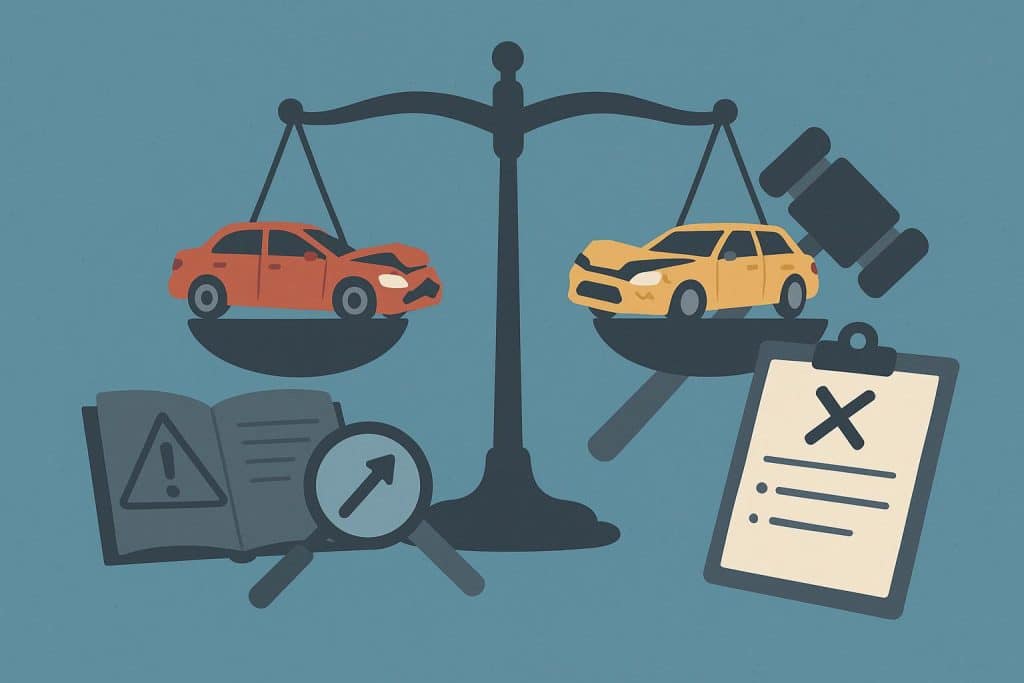Toledo, Ohio, is a vibrant city known for its manufacturing roots, bustling neighborhoods, and busy roadways that connect residents to work, school, and leisure. With so many vehicles navigating the city streets daily, car accidents are an unfortunate reality, often leading to injuries, property damage, and complex legal questions. Understanding who is at fault and the role of negligence is crucial for anyone involved in a collision, as these determinations directly affect compensation and liability.
Toledo’s traffic laws, combined with the specifics of each accident, can make these cases complex and challenging to navigate without professional guidance. That’s where experienced Toledo car accident lawyers come in. These legal professionals analyze evidence, consult with experts, interview witnesses, and interpret local traffic regulations to build a strong case. Their expertise ensures that victims can pursue rightful compensation while navigating the legal process with confidence and clarity.
Understanding Fault and Negligence
Fault refers to who is responsible for an accident, while negligence is the failure to exercise reasonable care. Both concepts are central to car accident injury cases. Lawyers focus on identifying and presenting evidence that shows who acted negligently, what specific actions or inactions caused the accident, and how those actions directly led to the crash. Understanding fault and negligence is key to building a strong case and ensuring that the responsible party is held accountable for any damages or injuries.
Gathering Evidence
Determining who is at fault starts with gathering evidence to get a complete picture of the accident. Car accident lawyers review multiple sources, starting with police reports, which often include officer observations and initial assessments. Experts may also weigh in to validate these findings. Witness statements, when available, provide additional perspectives that can clarify what happened. Photographs of the accident scene are crucial, showing vehicle positions, damage, and road conditions, while traffic camera footage can offer further insights. Lawyers also examine medical records to assess the extent and severity of injuries, which can help demonstrate the seriousness of the accident and support a client’s claim.
Interviewing Witnesses
Interviewing witnesses is crucial to building a strong case. Attorneys speak with people who saw the accident to get an unbiased account of what happened. Witness statements help them piece together a clear narrative, connecting the dots between negligent acts and showing how the accident occurred.
Analyzing Traffic Laws
Understanding traffic laws is essential when determining responsibility in a car accident. Lawyers carefully review the rules that apply where the crash occurred, noting any violations such as speeding, running a stoplight, or failing to yield. These infractions can have a significant impact on assigning fault. Experienced attorneys use this knowledge to build a strong case, highlighting how the other party’s failure to follow the law contributed to the accident and advocating effectively on behalf of their client.
Consulting Experts
For complicated cases, lawyers can consult experts to strengthen their arguments. Accident reconstruction specialists use scientific methods to recreate the crash, analyzing factors like vehicle speed, point of impact, and distances involved. Their findings help paint a clearer picture of how the accident occurred.
Attorneys may also work with medical experts to assess injuries, as the nature and severity of harm can reveal the force and direction of the impact. This expert insight can be crucial in demonstrating negligence and establishing a stronger case for their client.
Determining Comparative and Contributory Negligence
In some cases, two or more parties may be responsible for an accident. Lawyers assess whether comparative or contributory negligence applies.
Comparative negligence means fault is divided among the parties, which can reduce the compensation each party receives. In contrast, contributory negligence can bar recovery entirely if the injured person is found even slightly at fault. Understanding these rules helps attorneys anticipate potential outcomes, craft strategies that protect their clients’ interests, and negotiate fair settlements.
Negotiating Settlements
After assessing liability and negligence, attorneys move on to negotiating settlements. They present the evidence to insurance companies and advocate for fair compensation. A well-prepared case can often lead to a favorable settlement without the need for a lengthy court battle. Lawyers work to secure compensations that cover medical bills, car repairs, lost wages, and other related damages.
Conclusion
Determining fault and negligence in car accidents is a detailed and meticulous process. Car accident lawyers have several means of establishing fault and representing their clients. From collecting evidence, conducting legal research, interviewing witnesses and experts, and settling cases, these attorneys help ensure that justice is served. Their professional expertise ensures that the intricate challenges of car crashes are addressed accurately, providing support to everyone affected.
